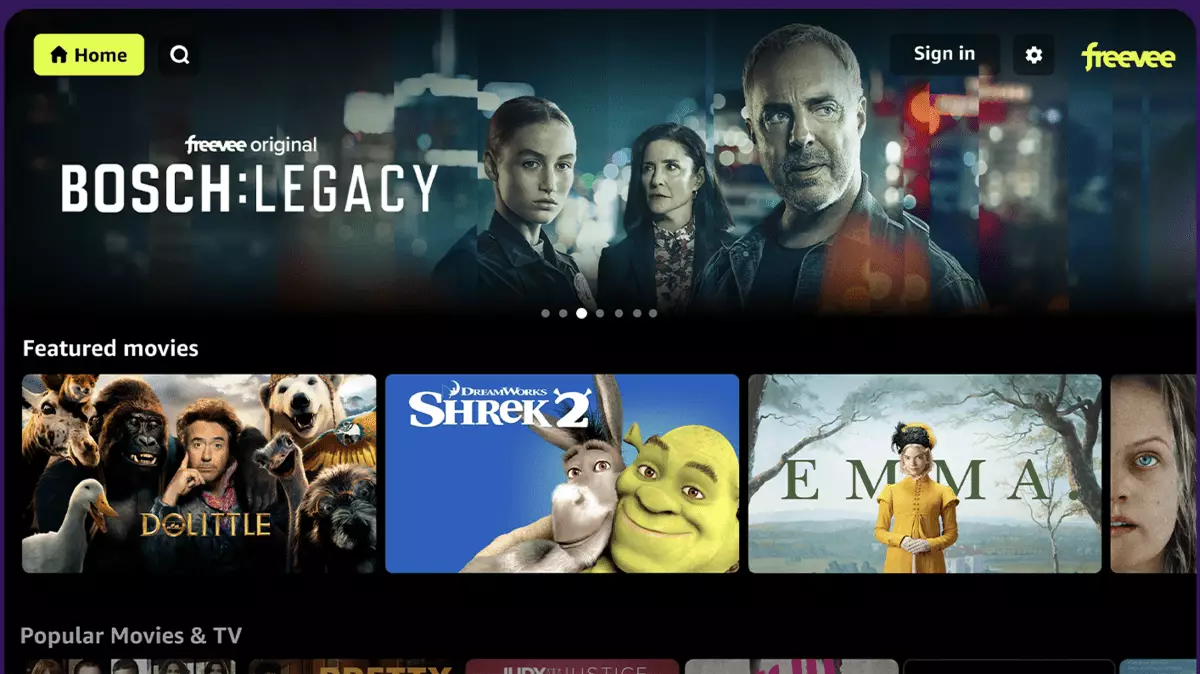In a landscape saturated with streaming services vying for consumer attention, Amazon’s recent announcement to retire the standalone Freevee app marks a significant pivot in its digital strategy. Rather than dispersing content across multiple platforms, Amazon is consolidating its free, ad-supported offerings into Prime Video—a move that signals an emphasis on efficiency, brand clarity, and user experience. This decision, announced with a straightforward notification to users, reflects an understanding that in the competitive world of streaming, fewer, more robust platforms can foster stronger loyalty and better content management.
Amazon’s rationale seems rooted in a desire to streamline operations. Managing separate apps for Prime and Freevee likely posed logistical and marketing challenges, diluting brand identity and possibly confusing consumers. By integrating Freevee’s extensive library of shows, movies, and live TV into Prime Video, Amazon effectively simplifies the user journey. This consolidation is also a strategic response to the shifting consumption patterns unveiled by recent Nielsen reports, which indicated streaming had overtaken traditional cable and network TV as the dominant form of entertainment in the U.S. Recognizing this, Amazon is positioning Prime Video as the singular, comprehensive hub for all viewing preferences—free or paid.
Implications for Content and Audience Engagement
The transition does not mean the loss of Freevee’s beloved content but rather a rebranding and relaunching within Prime Video. Titles like the Emmy-nominated “Jury Duty,” crime series “Bosch: Legacy,” and popular soaps will now be accessible alongside Amazon’s other offerings—no subscription required, just like before. This move could redefine how viewers interact with ad-supported content, making it more seamless and integrated with a platform many users already trust and frequent.
However, this unified approach raises questions about how Amazon will differentiate its free content from its premium offerings. Will the user experience become more cluttered, or will it be a boon—enhancing discoverability by putting all titles under one roof? From a strategic standpoint, Amazon appears confident that consolidating its streaming assets will not only lessen regulatory and operational burdens but also enable better analytics, targeted advertising, and content curation.
This shift also suggests that Amazon is betting on Prime Video to serve as the primary conduit for consumer engagement in streaming. As more viewers gravitate toward one-stop entertainment sources, the company’s move to phase out Freevee branding could serve as a catalyst to bolster Prime’s subscriber base and brand loyalty, even among non-paying users who enjoy free content. It’s a bold move that underscores a broader industry trend: the importance of creating a unified ecosystem in a fragmented digital environment.
Evaluating the Risks and Rewards
While this integration presents exciting opportunities, it is not without its risks. Users who once appreciated the simplicity of a dedicated Freevee app may feel alienated or frustrated by the transition—especially if they encountered difficulties during the switch or perceived a less dedicated experience. Moreover, Amazon’s decision to continue supporting the Freevee app until August 2025 shows a cautious approach, giving users ample time to adjust.
From a business perspective, the move to streamline could lead to greater data collection and more efficient advertising strategies—key to monetizing free content in the long term. But it also means Amazon must ensure that its free content remains competitive in an increasingly crowded market. With independent apps from other giants offering similar libraries, Amazon’s ability to maintain viewer engagement will depend largely on content quality, ease of access, and effective marketing within Prime Video.
Ultimately, Amazon’s decision to phase out Freevee signals a confident belief in the power of consolidation. This move aims to create a single, easy-to-navigate portal for millions of viewers, aligning with a broader industry shift toward holistic content ecosystems—one where user attention is concentrated in fewer, more comprehensive platforms. Whether this strategy will yield long-term success hinges on how well Amazon manages this transition and leverages Prime Video’s growing dominance in the streaming universe.

